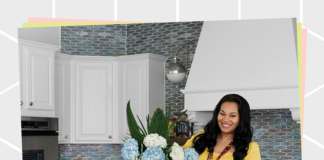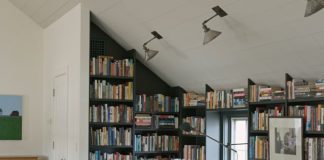
With the advances in modern flooring, such as engineered floors, pre-finished floors, and snap or fold and lock installment, there’s much to recommend a do-it-yourself (DIY) installation. But there are times when you may want a little more knowledge in choosing appropriate materials, tackling problem areas, doing complex installations, and finishing floors. This is when it becomes clear that you might consider hiring a flooring consultan
Let’s take a look at some of the situations where you might want to get a little extra help – or turn the job over completely to a pro.
Hardwood Floors Installed Over Cement Subfloor
If your cement subfloor has moisture issues, do you know how to test for trouble? Do you know the best way to seal the subfloor? Which sealers will work together with a flooring adhesive? Do you want – or need – to utilize a plywood subfloor over the cement? If you’re a city dweller, are you required or would it be appropriate to use sound dampening material in the installation? Are you comfortable using flooring adhesive, which is extremely messy, and needs close supervision during the installation?
These are some of the important questions to consider before diving right in yourself. You might want to get a consultation on your project before you decide which way to go. Contractors can give you an idea about the scope of the job, the estimated cost, and some of the potential problems. If you suspect that your installation may be problematic, and you don’t have a lot of experience, you might want to pay a little extra and “leave it to the pros!”
If You Suspect a Bad Subfloor
You’ll have a number of clues when your subfloor is bad, in the form of creaks, groans, soft or spongy spots, Perhaps there’s an associated water issue such as a leaky pipes or fixture. Or an older house where you may even see the floors sloping from one side of the room to the other. Maybe the room is built over an unimproved crawlspace – that’s a high probability floor damage culprit.
All of these situations most likely require some associated carpentry once the old floor is removed. Then you’ll be able to make a good visual and physical assessment of the subfloor. If you go further and remove that too due to obvious damage, then you’ll have a close-up inspection of the joists. A possible plan of attack here might be to remove the floor yourself to save some money. It can be done fairly easily (always be careful at the edges and around door jambs.) Although remember that you’ll need to cart all the old flooring away.
Let’s say you’ve removed your old wood floor, and – as you suspected, you’ve found a lousy old subfloor, that’s spongy, uneven, and out of level. Depending on your comfort level, you might be hiring a flooring consultant to take it over from here. We can’t stress enough that if your subfloor is below standard, and not solid, and level, your hardwood flooring will never look good on top of it. If it means you have to hire a pro to do some subfloor carpentry, you’ll be glad in the long run.
Intricate of Difficult Installations
Do you have several rooms being done at once? Can you afford to have those rooms out of service for an extended period of time while you do the work? Are there stairs, steps or multi-levels involved? Considering mixing woods for a grand effect, or utilizing some parquet elements, or inlaid elements? What about the sheer size of the project, is it something you can tackle in a few days, or is it bound to become “the winter of your discontent?” What about using traditional tongue and grooved boards in a nail down installation; do you have the proper tools, such as a pneumatic nail gun? And what about unfinished floors; are you comfortable sanding and finishing your floors?
Again, these situations lean in favor of hiring a flooring consultant to handle a bigger or more complex job. The finishing alone is a mind-bending task involving heavy belt sanders, and edge sanders, then cleaning, then applying several coats of your finish. Most good flooring contractors today feature dustless sanding equipment that’s attached to a huge vacuum device outside. The volume of dust removed and the relative ease of cleanup is well worth the extra dollars.
What to Ask When Hiring a Flooring Consultant
Before you hire anyone, do some homework. Go to a few flooring retailers and discuss the project you’re considering, and ask their advice. If it’s a smaller room, and you’re thinking about pre-finished click and fold flooring, they may tell you to go forth and conquer it on your own. But they’ll also be the first to warn you off a job that would put you in over your head.
Then ask them who they recommend, and why. Once you have a few names, call them and discuss the project, tell them the materials you’re considering, and any other details or concerns, such as allergic sensitivity, etc. A good contractor will want to come by and size up the job in person. Be sure to ask him the following questions:
- Has he ever installed this type of flooring before?
- Are there any special concerns with this type of flooring?
- Would he recommend this type of flooring, or does he have any alternate ideas? (Remember, this is an opportunity for you to listen to a pro in this field, and perhaps learn some other installation ideas and techniques – don’t gloss over this, but rather spend time talking through your ideas and his.
- Does he work alone or have a crew?
- Will he personally be on the jobsite, doing the work?
- Can he give you a solid start and finish date for the project?
- Does he guarantee his work?
- Does he have a portfolio of finished jobs that you can see?
- Can he provide you with 3 references from previous jobs? Get their numbers and call yourself.
Remember too, that an installer is a great resource at the end of the cycle, but consider utilizing a flooring consultant at the beginning of the cycle. Better flooring stores have designer/consultants on staff to help you wade through the thousands of choices. Bring pictures of your space, and ask for their ideas. Try not to be set in your ways, but open to new materials, designs, and techniques. You’ll probably see some ideas that you hadn’t even considered! If you do spend time with a design consultant, it’s really only fair to buy your material from that store. Remember too, that they can help you choose a quality installer who will do good work to continue to get their recommendations.






































